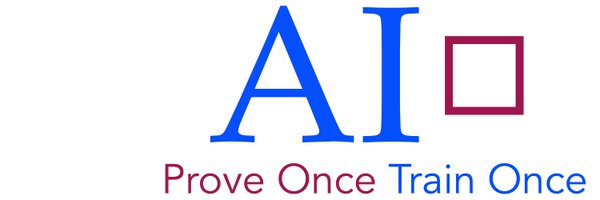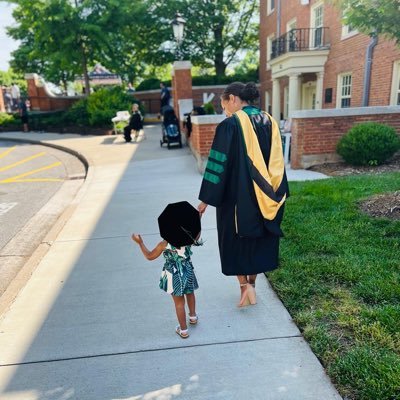
Randall Balestriero
@randall_balestr
Followers
3,067
Following
243
Media
124
Statuses
454
AI Researcher: From theory to practice (and back) Postdoc @MetaAI with @ylecun PhD @RiceUniversity with @rbaraniuk Masters @ENS_Ulm @Paris_Sorbonne
USA
Joined April 2020
Don't wanna be here?
Send us removal request.
Explore trending content on Musk Viewer
Tuchel
• 164446 Tweets
#FGO
• 113600 Tweets
#sbhawks
• 48780 Tweets
カズラドロップ
• 47629 Tweets
バーニス
• 38359 Tweets
#deprem
• 36482 Tweets
#baystars
• 34164 Tweets
FY RECAP BLANK SS2EP4
• 31218 Tweets
#BlankReactSS2Ep4
• 28528 Tweets
ZETA
• 23817 Tweets
ソフトバンク
• 19958 Tweets
ジェロニモ
• 19709 Tweets
ホークス
• 17286 Tweets
スタメン
• 14523 Tweets
ジャイアンツ
• 14382 Tweets
カノウさん
• 12440 Tweets
ベイスターズ
• 12014 Tweets
日本シリーズ
• 10773 Tweets
Last Seen Profiles
Deep Neural Networks are powerful... but how do you provably enforce some constraints into them? With
@ylecun
we introduce POLICE a simple method that does just that provably without sampling or changes in your loss/training (and it uses affine splines)!
7
83
545
-A new paper explaining batch norm !
-Please... there are already >>1 papers showing it helps optimization,
@ylecun
even said it in 1998
-Wait! it does more and can be studied from a spline viewpoint e.g. batch norm fits a random weight DN to your data!
⬇️
3
52
318
If you train your AI system without labels, SSL is probably what you will end up using. But you might hit many walls along the way as SSL builds upon decades of research. To help, we compiled this guide:
whether you train/deploy/research, give it a read!
Everything you ever wanted to know about Self-Supervised Learning but were afraid to ask.
A giant cookbook of SSL recipes.
By a large crowd from Meta-FAIR with various academic collaborators led by
@randall_balestr
and Mark Ibrahim.
44
684
3K
5
39
236
Very happy to *finally* share our latest findings with
@ylecun
tying different SSL methods to known spectral embedding methods (in addition of providing as many insights/ideas as we could)...
⬇️ is a very brief summary of some key results :)
8
42
222
Supervised and self-supervised learning? Two separate methods for different cases... one might say! With
@CabannesVivien
@ylecun
Leon Bottou we show instead that both live on the same continuum... opening the door to novel principled learning strategies!
2
49
204
Latest preprint with Léon Bottou and
@ylecun
on the impact of regularization/data-augmentation on per-class performances (for better or worse)! Using them improves average generalization but some classes will have worse performance than without them
🧵1/4
4
46
191
Batch-normalization (BN)--used in pretty much all non-transformer AI models--minimize the total least square objective between the training points and the model's input space partition! TLDR: total least square is all you need to dive into AI theory!
2
35
185
Very happy to share that our paper at the intersection of Information Theory/Self-Supervised Learning/Spline Theory got into
#NeurIPS
! We show how to (i) do information theory with deterministic network (ii) derive new SSL guarantees/methods from it!
4
34
173
Affine splines enable you to do deep learning theory without resorting to the linearized/kernel regime i.e. you study what practitioners actually deploy. But even more important, splines provide the coolest viz. of deep networks you could dream of!
List of useful spline papers⬇️
How are Deep Neural Networks black-boxes if you can visualize them in an 'exact' manner?
Our new
#CVPR23
paper, presents a fast and scalable PyTorch toolbox to visualize the linear regions, aka partition+decision boundary, of any DNN (red🔻)!
🧵 1/N
7
57
275
1
26
163
Learning good representations using manifold learning? Spectral embedding? Energy based models? Self-supervised learning? All share one goal: learning non-collapsed representations with minimal variations. Join
@CabannesVivien
@albertobietti
for a journey:
4
33
159
100% true. That is why I strongly recommend anyone learning deep learning to also take a basic digital signal processing course. At least to get the basics of convolution (CNNs), aliasing (sub-sampling/pre-processing), FIR and IIR filters (RNNs), wavelet thresholding (AEs)
5
19
146
Wanna
- use Information Theory
- but with deterministic deep networks
- to study and improve self-supervised learning?
We do just that and explain how in our latest preprint with
@ziv_ravid
@ylecun
@timrudner
and Kenji!
Bonus: it uses affine splines ;)
2
31
151
Honored to join
@BrownCSDept
to keep pushing for theoretically grounded AI solutions! From self supervised learning (what else do you need?) to fairness, we have one motto: Prove Once Train Once
I want to thank everyone I have talked/pdb/trained/published with... you made me!
Please welcome
@randall_balestr
, joining
@BrownCSDept
as assistant professor! His research focuses on novel theoretical solutions to guide practitioners, to safeguard users, and to pave the way towards a truly autonomous AI solution. Learn more:
0
3
52
13
11
145
How to assess SSL models’ downstream performance with no labels, no tuning/training, and in a matter of minutes?
With
@garridoq_
,
@laurentnajman
, and
@ylecun
, we answer this question by introducing RankMe, a simple metric based on the rank of embeddings!
2
20
125
Even if the Fourier transform was not explicitly invoked, it has been present for decades as the preferred convolution algorithm for large image and/or filter sizes!
Here is yet another classic read from
@ylecun
on the subject
3
17
107
Happy that our work on understanding the interplay between architecture/data-augmentation on Self-Supervised Learning downstream perfs. has been accepted at
#ICML2023
! YES, you can successfully use SSL with ``bad'' DA as long as your DN archit. is right
1
17
91
We hope you have found all the answers you needed in our cookbook around SOTA representation learning with SSL! But wait, we will be giving away even more tips and tricks at our
#ICML2023
tutorial!
Monday/1:30pm local/exhibit hall2
speakers include
@imisra_
@mcaron31
@endernewton
Everything you ever wanted to know about Self-Supervised Learning but were afraid to ask.
A giant cookbook of SSL recipes.
By a large crowd from Meta-FAIR with various academic collaborators led by
@randall_balestr
and Mark Ibrahim.
44
684
3K
0
15
88
We previously showed () how many SSL methods could be unified using an inter-sample relationship graph (spectral embedding). From that, we now propose a new SSL method: 𝕏-CLR ()!
better loss=less spurious correlations being learned
1
20
82
Aaaaand we are back on the ground at poster 602 to cover a breaking news: learning a representation by reconstruction will not produce something useful for perception tasks! They don't have the same taste in features! Come by to learn why and to discuss alternative solutions!
5
6
83
Excited to share our
#NeurIPS2023
paper explaining part of the per-class accuracy degradation that data augmentation introduces: it creates asymmetric label-noise between coarse/fine classes of the same object e.g. car and wheel! We also find a remedy⬇️
1
12
82
POLICE code is now available:
Quick facts:
- POLICE only takes 5 lines of code
- code is jit/CPU/GPU friendly (PyTorch)
- it will only take a few minutes to generate all the figures
Eager to see the figures/papers/ideas you will create from it!
Deep Neural Networks are powerful... but how do you provably enforce some constraints into them? With
@ylecun
we introduce POLICE a simple method that does just that provably without sampling or changes in your loss/training (and it uses affine splines)!
7
83
545
0
10
71
Interestingly the ReLU and Swish relation is well understood from a spline viewpoint akin to the relation between k-NN and isotropic GMM:
deterministic vs probabilistic region assignment!
The same goes for absolute value vs Mish, and many more!
More at
0
10
69
Our
#CVPR2023
submission has been accepted! ()
We develop an exact+fast algo to compute a Deep Network partition characterizing its geometry and decision boundary e.g. to rapidly sample from the latter for viz/active learning!
Code:
2
14
67
Not too surprising since e.g. batch-norm with random weights provably aligns the DN's partition to the data geometry:
just from its mini-batch statistics!
"The Expressive Power of Tuning Only the Norm Layers"
lead by
@AngelikiGiannou
&
@shashank_r12
We show that large frozen networks maintain expressivity even if we only fine-tune the norm & bias layers.
5
40
263
2
14
62
Happy to have four papers accepted to
#NeurIPS2022
! Shoutout to incredible co-authors/colleagues
@imisra_
@ylecun
@bobak_kiani
and Leon Bottou! I will tweet about each in the coming days... but⬇️
TLDR: Never stop improving papers from reviews/comments... perseverance is the key!
0
1
60
Happy to share our
#CVPR2022
paper w/
@imtiazprio
,
@rbaraniuk
providing a simple solution to provably sample from the (anti-)modes of pre-trained generative networks... also leading to new StyleGAN2/3/BigGAN FID SOTAs
🧵(1/4)
colab:
4
12
58
Delighted to share that our work with
@garridoq_
and
@ylecun
got an oral+poster at
#ICML2023
! We enable truly label-free hyper-parameter search for SSL (validated on SimCLR/VICReg/DINO/.. and many datasets) aiming for best linear perf. without fine-tuning!
3
6
56
Interested in (A) self-supervised learning <-> spectral embedding (B) data-augmentation's unfair per-class impact (C) DA implicit/explicit regularizer (D) fast orthogonal/unitary weight learning? Come see us
#NeurIPS2022
4:30/Hall J
A:
#228
Tue
B:
#642
Thu
C:
#322
Wed
D:
#542
Wed
3
9
54
Amazing work resulting from an amazing collaboration made possible by
@forai_ml
and
@sarahookr
!
TLDR: we still have a lot to learn around what brings stochasticity in deep network training (init/batching/DA) and by how much. This paper takes an important step in quantifying them!
Our newest Paper Profiles video goes behind the scenes of our recent community-driven research collaboration, "FAIR-Ensemble: When Fairness Naturally Emerges from Deep Ensembling." Thanks to
@weiyinko_ml
and
@mrdanieldsouza
for taking the time to chat!
1
10
23
2
15
50
Accepted as an oral
#CVPR2022
!🥳
Taking this opportunity to say that this comes as a result of years of work in building a theoretical bridge between deep networks<->continuous piecewise affine operators. Theory is a guide that reduce the set of unknown to be cross-validated 🧑🔧!
Happy to share our
#CVPR2022
paper w/
@imtiazprio
,
@rbaraniuk
providing a simple solution to provably sample from the (anti-)modes of pre-trained generative networks... also leading to new StyleGAN2/3/BigGAN FID SOTAs
🧵(1/4)
colab:
4
12
58
0
10
46
SSL and supervised learning unified under one loss (only the inter-sample similarity graph varies between them) at
#ICCV23
Friday/10:30/Nord/023
Hello to cheap expert-free active/supervised learning by asking if samples come from the same class, not asking for the class label!
1
6
44
Delighted to share our latest preprint with Bobak Kiani,
@ylecun
, and Seth Lloyd where we propose an **efficient and scalable** gradient based training of orthogonal/unitary matrices (e.g. used in each layer of a recurrent network/convolutional network).
5
11
43
+1! Academic programs should favor candidates who did not get that chance, to mentor them and to bring them at the top for post-PhD adventures. Taking PhD candidates to bloat your group's publication counts year-one goes against the academic spirit... (teaching statement anyone?)
1
0
38
RankMe: cheap/fast label-free hparam selection for DNNs will be at ICML
- oral: ballroom B 4pm (local) Wed.
- poster⬇️: exhibit hall 1
#609
1:30pm Thur.
Also includes insights around representations' ranks, their surprising consistency across datasets, ...
1
9
37
Delighted to share our
@TmlrOrg
paper with F. Bordes and P. Vincent! We use the latest diffusion model to interpret/visualize the features of black-box models (DNNs, ...) by conditioning the generation with the model's features.
We obtain many insights⬇️⬇️
1
8
36
Do you remember the POLICE (fast PrOvable LInear Constraints Enforcement for deep networks ) ? An application to adversarial robustness is now available
POLICE can be used as a one-shot robustifier, or during training/fine-tuning!⬇️
Deep Neural Networks are powerful... but how do you provably enforce some constraints into them? With
@ylecun
we introduce POLICE a simple method that does just that provably without sampling or changes in your loss/training (and it uses affine splines)!
7
83
545
1
4
35
Delighted to share that--by dint of all my coauthors--I will be at
#ICML2024
to present our findings! From LLM geometry to adversarial grokking, without forgetting the provable benefits of moving away from reconstruction for representation learning!
link:
6
10
33
Self-Supervised Learning methods have strong a priori on the type of data distribution you train on. With
@mido_assran
et al. we highlight what are those a priori and how to tune them at our advantage e.g. to improve SSL on uncurated and/or imbalanced data
0
6
33
Very happy to share that we will be presenting that work at
#ICML2024
! Moving away from reconstruction is key to learn better semantic abstractions... but we can only do so by first understanding why learning by reconstruction falls short!
1
2
27
With very large models and/or slow training frameworks (GPT-3, self-supervised learning, ...) I believe that theoretically-backed methods will regain grounds... brute-force cross-validation of everything is no longer an option! MuTransfer of
@TheGregYang
embodies that perfectly
0
2
26
We will be presenting this work at
#ICML2024
diving deeper into LLMs' geometry and how that can help in understanding their current limitations. For example, increasing a prompt's intrinsic dimension bypasses RLHF!
Congrats
@Rom_Cosentino
@shekkizh
0
8
24
🔔LLM update!
- The few hundred features we extract from Mistral/Llama2-7B to characterize your prompt (e.g. for domain separation or toxicity detection) also work on Llama2-70B
- We validate them on the official Jigsaw Kaggle challenge and reach SOTA
1
4
24
In our latest preprint we show that Deep Ensembles have fairness benefits even when each model uses the same training set/architecture/optimizer. We also characterize by how much random init./data-augmentation/data-ordering impact the learned model between training episodes :)
1
5
23
Thanks to an amazing team (
@byoubii
@D_Bouchacourt
@marksibrahim
et al.) we are releasing fine-grained distribution shift annotations for each Imagenet eval image and many train ones along with controlled robustness analysis of many SOTA models e.g. looking at the impact of DA!
1
3
23
Very happy to speak at SSL4EO! The core part of my talk will follow our latest papers to (i) provide principled insights into SSL, and (ii) give guidelines to design your own pipeline:
1/4: why do we need to move away from learning by reconstruction ()
⬇️
At University of Copenhagen, we are organizing a summer PhD course on SSL4EO. Registration is now open via: (seats are limited). We are looking forward to hear from:
@randall_balestr
,
@MarcCoru
,
@kklmmr
,
@brunosan
,
@JanDirkWegner1
,
@xiaoxiang_zhu
3
44
166
2
2
20
@shortstein
@icmlconf
As sad as it is, it seems that such situations have existed across fields and ages, as formulated by Fisher in 1958!
0
0
20
Aaaand we are now covering that surprising event happening on poster 705 with guest
@shekkizh
: diving into LLMs geometry and using those insights to derive features from pretrained models or to bypass RLHF through natural prompt manipulations!
0
2
19
Huge thanks to
@marksibrahim
, Vlad Sobal,
@arimorcos
,
@sshkhr16
,
@tomgoldsteincs
, Florian Bordes,
@AdrienBardes
,
@mialon_gregoire
,
@tydsh
,
@A_v_i__S
,
@andrewgwils
,
@jonasgeiping
,
@garridoq_
,
@pierrefdz
,
@_amirbar
,
@hpirsiav10
,
@ylecun
,
@micahgoldblum
it was a pleasure working with all of you!
1
1
19
Our geometric characterization of LLMs ( at
#ICML2024
) tied the prompts' intrinsic dimensions to their ability to make a LLM generation toxic.
@Tenyx_AI
researchers extended our results for reasoning!
Q: Can reasoning and safe generation coexist with LLMs?
Unlocking better reasoning in LLMs can go beyond just longer context & bigger models!
Our recent research () offers a geometric view of the expressive power and reasoning capabilities of LLMs. Stay tuned for more insights!
@Rom_Cosentino
#LLM
#Reasoning
0
2
3
6
6
18
Impressive program at the upcoming World AI Cannes Festival in France
@WAICANNES
! The AI Society / AI Today & Tomorrow track alone has an impressive list of speakers including
@ylecun
, anyone can attend (for free) with the Discovery Pass !
0
5
18
New preprint + AI4Science
#ICML2024
workshop: ScaLES!
ScaLES provides a differentiable confidence score for samples generated from pretrained models. Applied to Latent Space Optimization, ScaLES improves the solutions to black-box optimization problems!
1
5
16
You have to train an ensemble of Deep Networks with same training set and architecture.
Q: How to maximize the ensemble fairness?
1. vary the weight initialization
2. vary the data sampling
3. vary the data-augmentation seed
4. all the above
Answer at the AFT workshop on Friday!
@weiyinko_ml
@mrdanieldsouza
Find out more about what model design choices can mitigate unfair outcomes by reading "FAIR-Ensemble: When Fairness Naturally Emerges from Deep Ensembling."
📜
1
0
4
1
5
16
Provable control of the quality and diversity of sampling for pre-trained deep generative networks ... without any additional learning! Check us out at
#CVPR2022
tomorrow at 8:30 am in Hall B1, Oral Session 3.1.1, and Poster Session 3.1
Happy to share our
#CVPR2022
paper w/
@imtiazprio
,
@rbaraniuk
providing a simple solution to provably sample from the (anti-)modes of pre-trained generative networks... also leading to new StyleGAN2/3/BigGAN FID SOTAs
🧵(1/4)
colab:
4
12
58
0
2
15
@ISusmelj
can't anyone add a feature saying that if the type of inferred vehicle changed chaotically during 5 sec, let's just represent it as an "unidentifiable blob" until it stabilizes? at least would not look as buggy on the frontend...
1
1
14
We indeed need a more closed-loop SSL e.g. where data-augmentations of positive pairs are guided by the deep network's guess (action) of what new views (sensory inputs) would provide it with new information leading to a sharper understanding of the presented image/scene!
#NeuroAI
: Could principles of embodied sensorimotor neuroscience unify and improve the various Self-Supervised Learning (SSL) methods? How could the brain self-supervise itself?
We are happy to share our
#NeurIPS2022
paper with
@franz_scherr
and Q. Guo🧵:
6
31
148
1
1
14
@WriteArthur
Well, yes there are the natural statistics of the training data that will influence the generation, but the type of DA/regularization that was used during training also plays a huge role. See for example our latest preprint on that point
Latest preprint with Léon Bottou and
@ylecun
on the impact of regularization/data-augmentation on per-class performances (for better or worse)! Using them improves average generalization but some classes will have worse performance than without them
🧵1/4
4
46
191
0
0
14




















































































































